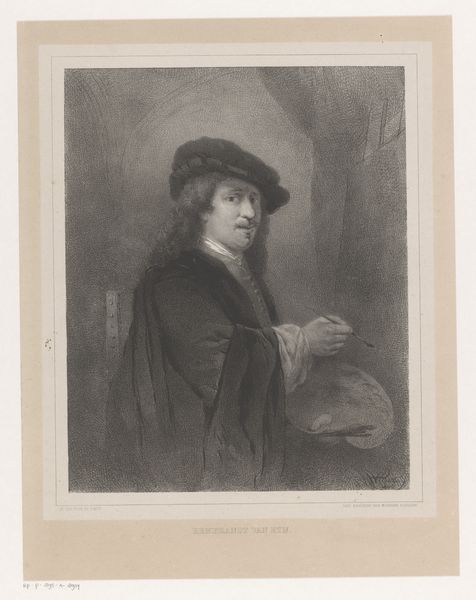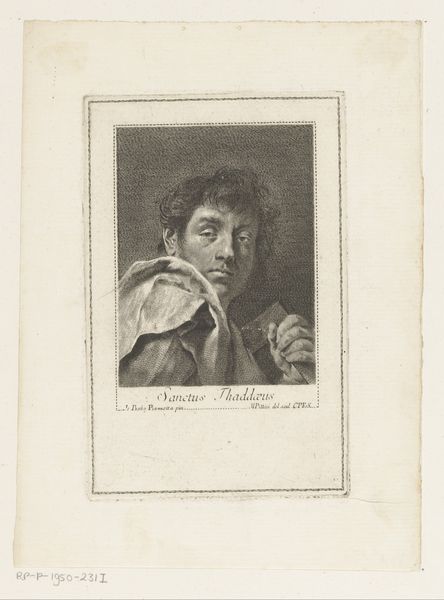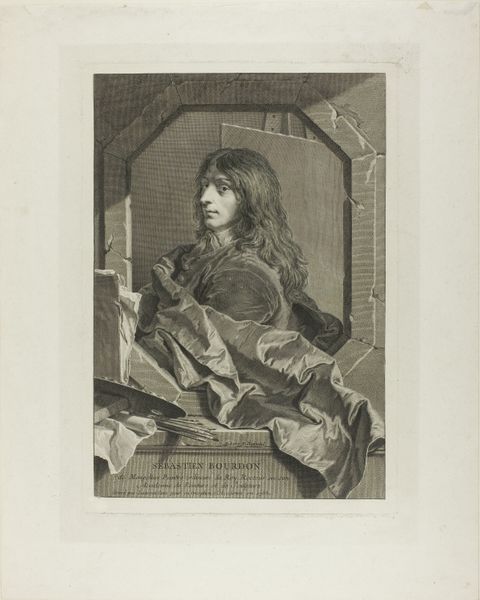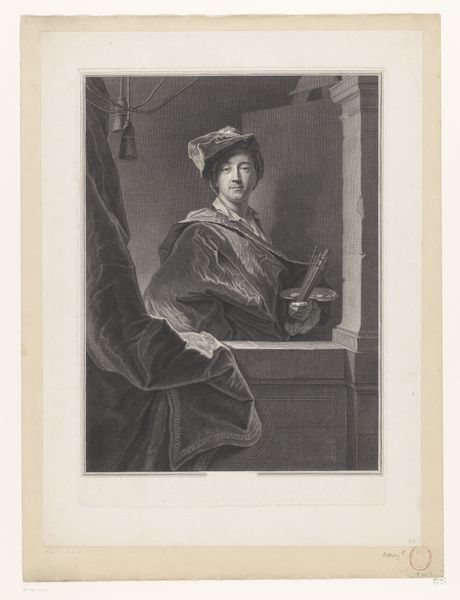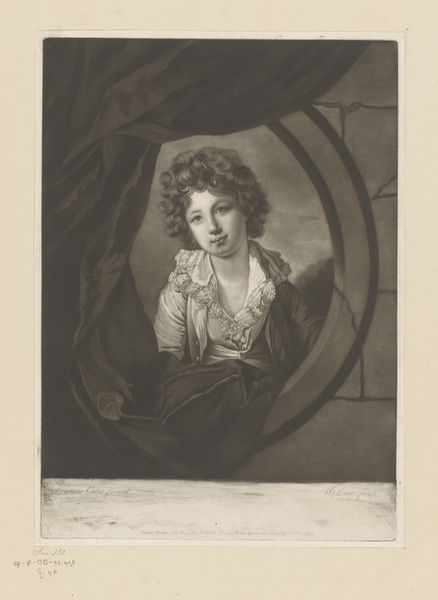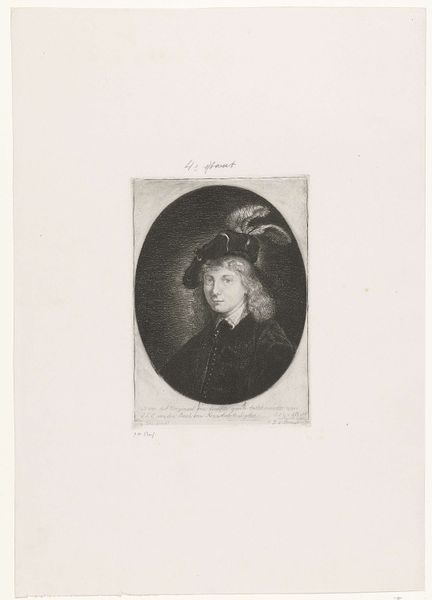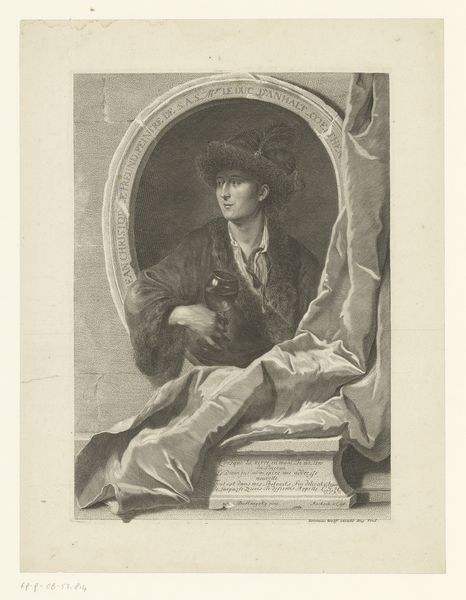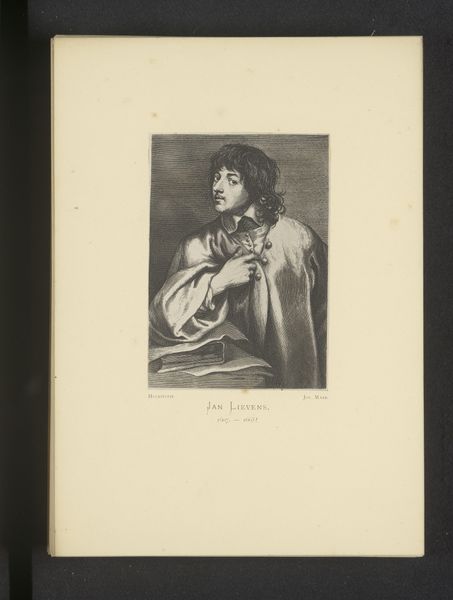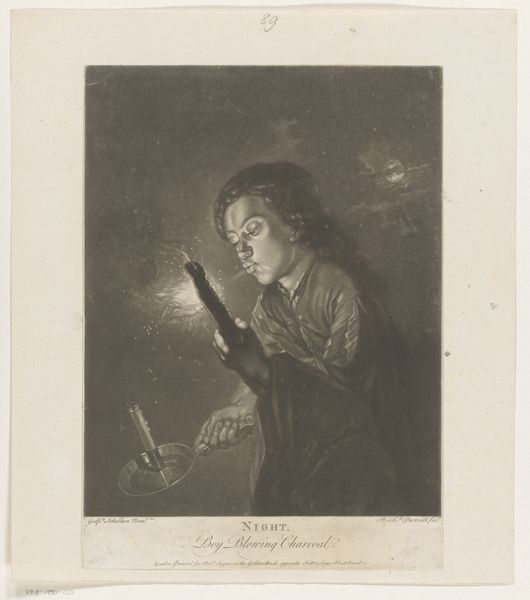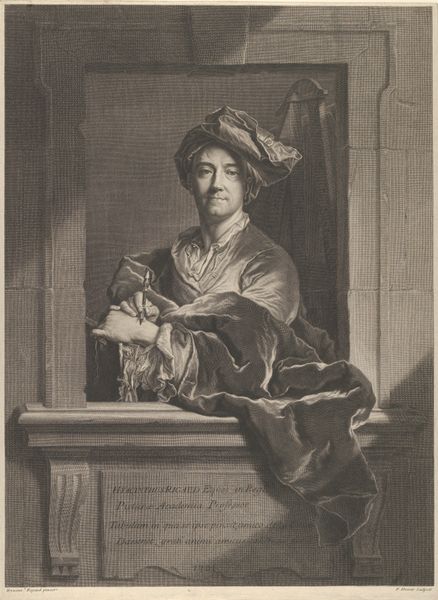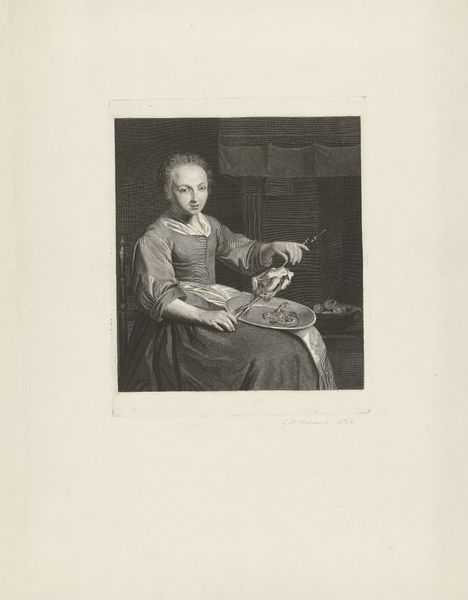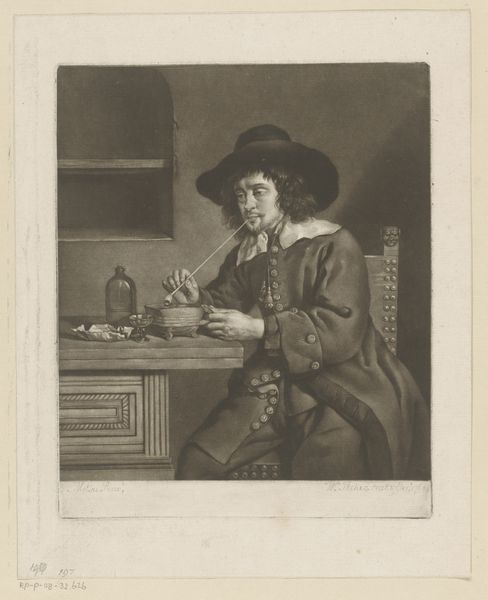
engraving
#
portrait
#
baroque
#
engraving
Dimensions: height 357 mm, width 254 mm
Copyright: Rijks Museum: Open Domain
Curator: What a fetching fellow! He has such an earnest, yearning look in his eyes, as though he’s waiting for the perfect sunset, or maybe just tea to be served. Editor: I agree that this engraving has an undeniable magnetism. This is "Portret van Enoch Seeman," created around 1727 by John (II) Faber, working in the Baroque style. Considering the era, portraits were, and remain, steeped in sociopolitical and economic contexts. Let's think about this man in the context of early 18th-century England. Curator: Yes! Context is all. Is it me, or is this Baroque vision more intimate, less puffed-up? Forget kings, the guy looks more like a poet daydreaming. His expression – so internal, lost in the thrill of the next idea or inspiration. The pose, too: mid-thought, quill pen at the ready, he is on the verge. It makes you want to peek into his book! Editor: Exactly. Look at how he is positioned, seemingly caught in a moment of introspection against a backdrop of classical architecture. Faber situates Seeman not just as an individual, but as an intellectual of the time, aligning him with classical ideals. Considering social mobility at that time, what did it mean to capture Seeman like this? His expression has a sensitivity that defies expectations. It prompts us to ponder class and representation. Who got to be represented? And how? Curator: All this fuss about status is missing the true magic! It's those dreamy eyes and flowing locks. Tell me this isn’t a rock star ready to wail for love! It isn't only that it has these hallmarks of nobility; it has real emotion. Don't forget art isn’t always a stiff recording device, it can also play up the feels. Editor: Yes, indeed. Although the sitter probably invested some energy to maintain appearances and project authority. This tension between private and public is one of portraiture's more interesting, enduring, characteristics. He wants to be seen as inspired and reflective, not as controlled or managed. How much of this is John Faber's own spin? Curator: Whether grand narrative, or personal whim, portraits such as these leave open that fascinating door: that of imagining yourself into someone else's life. Editor: Agreed, we see him, yes, but what exactly do we *see*?
Comments
No comments
Be the first to comment and join the conversation on the ultimate creative platform.
